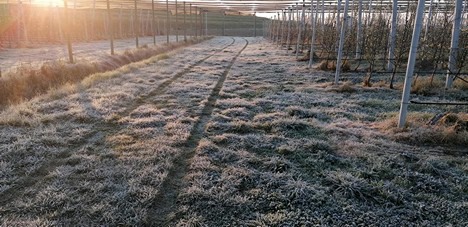"After witnessing near-summer temperatures during the Christmas season, it seems really illogical to think of celebrating Easter at zero degrees Celsius, yet this is precisely the weather scenario we witnessed last week. Those who have to deal with this situation are farmers, especially those employed in the fruit and vegetable sector, who have been for years seeing their crops destroyed overnight, and therefore forced to give up their production," says Luciano Mattarelli, manager of www.consulenzagricola.it in taking stock of the current situation.
"To address this problem, the European Commission took on the ta sk of restructuring the CAP-Community agricultural policy in 2020, working on the sensitive subject of risk coverage in the face of the sudden climate changes that are resulting in an increasing number of calamitous events. The European institutions," he points out, "have set as their goal to flank the traditional system of subsidized policies with a public mutual fund, confined to risks related to natural disasters (frost, drought, and flood), which, unfortunately, are not always taken into account when planning farm risk management.
sk of restructuring the CAP-Community agricultural policy in 2020, working on the sensitive subject of risk coverage in the face of the sudden climate changes that are resulting in an increasing number of calamitous events. The European institutions," he points out, "have set as their goal to flank the traditional system of subsidized policies with a public mutual fund, confined to risks related to natural disasters (frost, drought, and flood), which, unfortunately, are not always taken into account when planning farm risk management.
In Italy, as a matter of fact, out of about 705,000 farms receiving Pac subsidies in 2020, only 9.3 percent have stipulated insurance that mainly covers crops and, to a lesser extent, livestock and production facilities.
To date, the fruit and vegetable sector appears to be the most insured, but there are still very few crops that are protected. The main forms of insurance are taken out on wine, corn, apples, and processing tomatoes.

"The lack of insurance for other crops, in addition to having an excessively unbalanced insurance system in the regions of northern Italy, puts at great risk both the income of individual farms and the agricultural and agri-food production of the entire country."
The CAP has put on paper the goal of rebalancing the insurance system territory-wise, and with regard to risk management, the Pgra (Plan for Risk Management in Agriculture) has been approved, confirming the tools already provided in previous campaigns, namely subsidized insurance, mutual damage funds, sectoral income stabilization funds, and Agricat.
"In addition, the CAP 2023-2027 introduces a significant novelty that determines the possibility of allocating 3 percent of direct payments under Pillar I to a Mutual Fund intended to cover risks resulting from catastrophic adversity (frost, flood, drought). This Fund was established to create a homogeneous system at the national level that will apply to all CAP fund preceptors, bringing the Italian and European system closer to the American system in which all agricultural support policies are linked to risk management," concluded the consultant.
